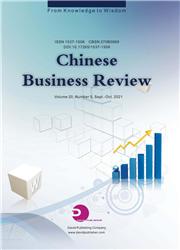Study on the Potential of China’s Fruit and Vegetable Products Export to the RCEP Partners
引用次数: 0
Abstract
China is one of the world’s major exporters of fruit and vegetable products, and the expansion of fruit and vegetable exports is important for increasing agricultural income. Based on time-varying stochastic frontier gravity model and trade inefficiency model, this paper empirically analyzes the influencing factors and trade efficiency of China’s fruit and vegetable products export to RCEP partners from 2001 to 2019. The results show that China’s GDP per capita, the population of importing countries, and common language conditions have positive effects on China’s fruit and vegetable products export to RCEP partners. GDP per capita of importing countries, the population of China, and geographical distance between trading parties hinder trade in fruit and vegetable products. The presence of trade inefficiencies constrains China’s fruit and vegetable products export to RCEP partners, with liner shipping connectivity and trade freedom having a positive relationship with export efficiency of fruit and vegetable products. Variable trade costs and fixed trade costs have a negative relationship with export efficiency of fruit and vegetable products, which hinder trade in fruit and vegetable products,while financial freedom and free trade agreements have no significant impact on export efficiency of fruit and vegetable products. results based on the stochastic frontier gravity model illustrate that China’s GDP per capita, the population size of the importing country, and the common language condition have a facilitating effect on China’s fruit and vegetable products export to the RCEP partners. The GDP per capita of the importing country, the size of China’s population, and the geographical distance between the two trading parties are detrimental to trade in fruit and vegetable products. The empirical results based on the trade inefficiency model show that liner shipping connectivity, trade freedom, and export efficiency of fruit and vegetable products are positively correlated and all promote trade in fruit and vegetable products. Variable trade costs and fixed trade costs are negatively correlated with export efficiency of fruit and vegetable products, which hinder trade in fruit and vegetable products. Financial freedom has no significant effect on export efficiency. According to the results of the trade efficiency and trade potential measurements, China’s fruit and vegetable products export to the RCEP partners have greater development prospects, with great potential for exports to Indonesia and the Philippines.中国果蔬产品对RCEP伙伴出口潜力研究
中国是世界上主要的果蔬产品出口国之一,扩大果蔬出口对增加农业收入至关重要。基于时变随机前沿引力模型和贸易低效率模型,实证分析了2001-2019年中国果蔬产品对RCEP伙伴出口的影响因素和贸易效率。结果表明,中国人均GDP、进口国人口和共同语言条件对中国向RCEP伙伴国的果蔬产品出口具有积极影响。进口国的人均GDP、中国的人口以及贸易各方之间的地理距离阻碍了水果和蔬菜产品的贸易。贸易低效的存在制约了中国向RCEP伙伴国的果蔬产品出口,班轮运输连通性和贸易自由度与果蔬产品出口效率呈正相关。可变贸易成本和固定贸易成本与果蔬产品出口效率呈负相关,阻碍了果蔬产品的贸易,而金融自由和自由贸易协定对果蔬产品的出口效率没有显著影响。基于随机边界引力模型的结果表明,中国人均GDP、进口国人口规模和共同语言条件对中国果蔬产品出口到RCEP伙伴国具有促进作用。进口国的人均国内生产总值、中国人口规模以及贸易双方之间的地理距离都不利于水果和蔬菜产品的贸易。基于贸易低效率模型的实证结果表明,班轮运输连通性、贸易自由度和果蔬产品出口效率呈正相关,都促进了果蔬产品贸易。可变贸易成本和固定贸易成本与果蔬产品出口效率呈负相关,阻碍了果蔬产品贸易。金融自由对出口效率没有显著影响。根据贸易效率和贸易潜力测算结果,中国对RCEP伙伴的果蔬产品出口具有更大的发展前景,对印尼和菲律宾的出口潜力巨大。
本文章由计算机程序翻译,如有差异,请以英文原文为准。
求助全文
约1分钟内获得全文
求助全文

 求助内容:
求助内容: 应助结果提醒方式:
应助结果提醒方式:


